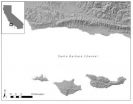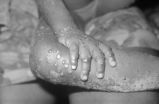(Press-News.org) People love to speculate about differences between the sexes, and neuroscience has brought a new technology to this pastime. Brain imaging studies are published at a great rate, and some report sex differences in brain structure or patterns of neural activity. But we should be skeptical about reports of brain differences between the sexes, writes psychological scientist Cordelia Fine in Current Directions in Psychological Science, a journal of the Association for Psychological Science. The results from these studies may not necessarily withstand the tests of larger sample sizes or improved analysis techniques—and it's too soon to know for sure what such results, even if they prove to be reliable, might mean for differences in male and female minds.
Bookstores are full of popular books on the differences between men's and women's brains. Fine, who works at Macquarie University in Australia, first became interested in the issue as a parent. She was reading a book about how the differences between boys' and girls' brains mean they should be taught differently. But as an academic, she was curious about the research on which these claims were based, and looked up the original studies.
"There were huge discrepancies between what the neuroimaging studies showed and the conclusions and claims that were being drawn from them," she says. In the article and her new book, Delusions of Gender, Fine dissects the ways that research goes astray between the scanning machine and the sound bite.
Some of the problems start with the research. The studies Fine came across were often conducted with small numbers of men and women, where the differences seen could have been due to chance. It's very easy and obvious for neuroscientists to compare the sexes by default. But when neuroscientists habitually check for sex differences, some researchers, just by chance, will find statistically significant differences between the two groups—even if there's no real difference between men and women overall.
This problem of false positive results is understood by the neuroscientists who do the research; they know that one study with 20-odd participants that finds some small region of difference between males and females is not the final word on the issue. But these often subtle, questionable differences are readily seized on by popular writers, Fine says.
Another problem is how to interpret sex differences in the brain. Neuroscientists are only beginning to understand how neural activity brings about complex psychological phenomena. The temptation, to which popular writers are particularly vulnerable, is to use gender stereotypes to bridge that gap in scientific knowledge.
The fact that neuroimaging studies use complex, expensive machines that seem to take pictures of the brain may also make their results seem more real, reliable, and impressive than behavioral studies. As a result, substantial behavioral evidence of gender similarity, or the sensitivity of gender differences to context, can be overshadowed by a single finding of a sex difference in the brain.
"A healthy dose of skepticism is required when it comes to reports of sex differences in the brain and what they mean," says Fine, who is concerned that claims about differences in male and female brains are reinforcing old-fashioned gender stereotypes.
###
For more information about this study, please contact Cordelia Fine at cfine@unimelb.edu.au.
Current Directions in Psychological Science, a journal of the Association for Psychological Science, publishes concise reviews on the latest advances in theory and research spanning all of scientific psychology and its applications. For a copy of "From Scanner to Sound Bite: Issues in Interpreting and Reporting Sex Differences in the Brain" and access to other Current Directions in Psychological Science research findings, please contact Keri Chiodo at 202-293-9300 or kchiodo@psychologicalscience.org.
Not so fast -- sex differences in the brain are overblown
2010-10-28
ELSE PRESS RELEASES FROM THIS DATE:
Scientists issue call to action for archaeological sites threatened by rising seas
2010-10-28
Should global warming cause sea levels to rise as predicted in coming decades, thousands of archaeological sites in coastal areas around the world will be lost to erosion. With no hope of saving all of these sites, archaeologists Torben Rick from the Smithsonian Institution, Leslie Reeder of Southern Methodist University, and Jon Erlandson of the University of Oregon have issued a call to action for scientists to assess the sites most at risk.
Writing in the Journal of Coastal Conservation and using California's Santa Barbara Channel as a case study, the researchers illustrate ...
Prospective voters and the new health care law
2010-10-28
Boston, MA – A comprehensive review of national opinion polls, including newly released data, shows that those who say they intend to vote for a Democratic congressional candidate in 2010 and those who say they intend to vote for a Republican in their district hold starkly different views of what they want the future of health reform legislation to be, mirroring the divide between Democratic and Republican leaders in Congress on this issue.
Nearly three-fourths (73%) of registered voters who say they intend to vote for a Democratic candidate favor the health care legislation ...
Doctors' sense of mission, self-identity key in choice to work in underserved areas
2010-10-28
Medical schools and clinics could boost the number of primary care physicians in medically underserved areas by selecting and encouraging students from these communities, who often exhibit a strong sense of responsibility for and identification with the people there, according to a new study by UCLA researchers and colleagues published in the current issue of the American Journal of Public Health.
Training these students in underserved settings during medical school and their residencies could also increase the likelihood they would continue serving those populations, ...
Tumor suppressor acts as oncogene in some cancers, say Mayo Clinic researchers
2010-10-28
JACKSONVILLE, Fla. — Researchers at Mayo Clinic in Florida have found that a molecule long believed to be a beneficial tumor suppressor — and thus a potential cancer drug target — appears to act as an oncogene in some lethal brain tumors.
The protein, epithelial cadherin (E-cadherin), is known for its ability to keep cancer cells glued together, preventing them from breaking away and metastasizing. But, based on their findings, published online in PLoS ONE, the scientists suggest E-cadherin can also function as an oncogene in some cancers. An oncogene helps push cancer ...
Structural genomics accelerates protein structure determination
2010-10-28
Proteins are molecular machines that transport substances, catalyze chemical reactions, pump ions, and identify signaling substances. They are chains of amino acids and the individual amino acid sequence is known for many of them. However, the functions a protein can carry out inside the cell are determined by the three-dimensional spatial structure of the protein. Establishing this so-called tertiary structure presents a great challenge to scientists. There is, thus, a lot of catching up to be done in structure analysis. To push progress, the National Institute of General ...
NOAA: Tagged narwhals track warming near Greenland
2010-10-28
In a research paper published online Saturday in the Journal of Geophysical Research Oceans, a publication of the American Geological Union (AGU), scientists reported the southern Baffin Bay off West Greenland has continued warming since wintertime ocean temperatures were last effectively measured there in the early 2000s.
Temperatures in the study were collected by narwhals, medium-sized toothed Arctic whales, during NOAA-sponsored missions in 2006 and 2007. The animals were tagged with sensors that recorded ocean depths and temperatures during feeding dives from the ...
Researchers find a 'liberal gene'
2010-10-28
Liberals may owe their political outlook partly to their genetic make-up, according to new research from the University of California, San Diego, and Harvard University. Ideology is affected not just by social factors, but also by a dopamine receptor gene called DRD4. The study's authors say this is the first research to identify a specific gene that predisposes people to certain political views.
Appearing in the latest edition of The Journal of Politics published by Cambridge University Press, the research focused on 2,000 subjects from The National Longitudinal Study ...
Deadly monkeypox virus might cause disease by breaking down lung tissue
2010-10-28
RICHLAND, Wash. -- A new study of an exotic, infectious virus that has caused three recent outbreaks in the United States reveals clues to how the virus might damage lungs during infection. The findings also suggest possible new ways to treat lung diseases in humans.
Not only does the infection from monkeypox virus increase production of proteins involved in inflammation, but it decreases production of proteins that keep lung tissue intact and lubricated. The findings appear in an upcoming issue of Molecular & Cellular Proteomics.
"Going into this study, we thought ...
Exposure to BPA associated with reduced semen quality
2010-10-28
Oakland, Calif.(October 28, 2010) — Increasing urine BPA (Bisphenol-A) level was significantly associated with decreased sperm concentration, decreased total sperm count, decreased sperm vitality and decreased sperm motility, according to a Kaiser Permanente study appearing in the journal of Fertility and Sterility.
The five-year study recruited 514 workers in factories in China and compared workers who had high urine BPA levels with those with low urine BPA. Men with higher urine BPA levels had 2-4 times the risk of having poor semen quality, including low sperm concentration, ...
New study suggests most preschool-age children exceed daily screen time recommendations
2010-10-28
Cincinnati, OH, October 28, 2010 -- The American Academy of Pediatrics (AAP) recommends that parents limit combined screen time from television, DVDs, computers, and video games to 2 hours per day for preschool-age children. In a study soon to be published in The Journal of Pediatrics, researchers found that many children are exposed to screen time both at home and while at child care, with 66% exceeding the recommended daily amount.
According to Dr. Pooja Tandon, "A majority of children under the age of 5 years in the United States spend almost 40 hours a week with ...

